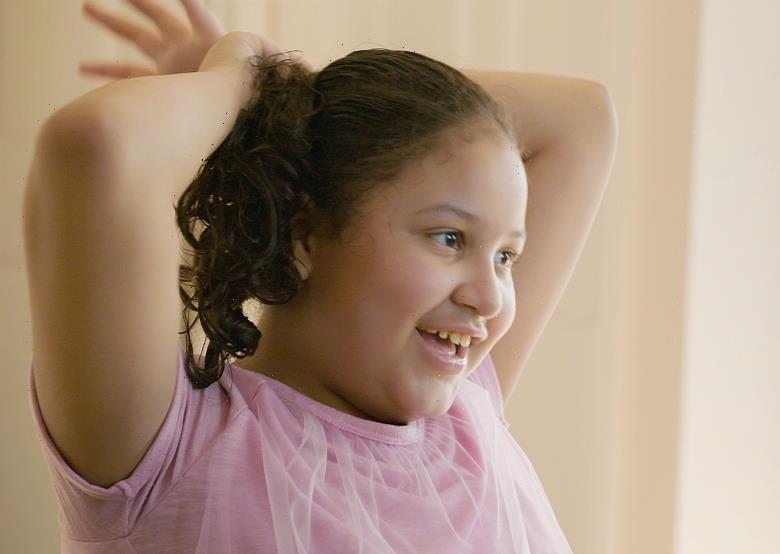It would be almost impossible to make a documentary series about the youngest generation in America without acknowledging the one that came before it. One of the most recognizable strengths of the new series “Through Our Eyes” is that it foregrounds the experiences of young people in America, while showing how linked they are to the things that are out of their control. From climate change to mass incarceration to homelessness, HBO Max’s original docuseries is less a policy primer than a reminder that action and inaction affect those beyond the ones who are most often given a venue to share their experience.
So this season, spanning four episodes from different directors, presents a handful of children with the opportunity to share their experiences as they understand them. They have a varying level of comfort on camera, but each brings a sense of poise to their story. Collectively, they are aware of the challenges faced by their parents and guardians, and they’re conscious of how their family situations shape how they’re perceived by classmates and neighbors (and, one gets the feeling, those watching the series in which they’re appearing).
In that way, though it’s necessarily framed as such, “Through Our Eyes” paints a picture of a generation of kids far more perceptive than even their most loving relatives sometimes give them credit for. These are families working through their respective trauma, with some in a better position to handle everything that comes with it. When these episodes include interviews with the parents, the focus is less on why a particular person is in prison or the specifics of a battlefield injury than on how each of those realities reverberate through other lives.
“Through Our Eyes” illustrates how wide-ranging these issues are without being directly aimed at solutions. Though the Sesame Workshop (which produced the project with the goal of making something that parents and children could watch together) is designed to offer resources for families who are similarly affected, this series is more about capturing the realities of day-to-day life and the cumulative toll that comes with each destabilizing systemic force. They may not share the exact same perspective as those who are helping to raise them, but these kids are more than capable at putting into words what exactly they’ve gleaned from how those around them are facing their own challenges.
“Through Our Eyes”
Sesame Workshop
As much as “Through Our Eyes” offers its younger subjects the respect to be treated with maturity while letting them just be kids at the same time, there are some stretches that feel a touch polished, as if this is sometimes a presentation of these families rather than a series built on observations. That occasionally comes across in the score, which can point to a slight lack of trust in letting the more emotional parts exist on their own terms. (One particular moment that benefits from proper handling is “Homefront,” the Kristi Jacobson-directed look at the families of wounded veterans. When a 10-year-old boy starts to cry while talking about his mother, in the next interview shot, you can still see the damp spot of tears on his father’s shoulder where he consoled him . “Gotta let your kids get it out,” he says, “or they’ll be just like us.”)
The series assembles a roster of filmmakers well-versed in balancing the systemic and the specific, the personal and the more universal. Rudy Valdez, following up “We Are Brooklyn Saints” (another doc project focused on children) is a co-director along with Geeta Gandbhir on “Apart,” the chapter on kids navigating life with a parent in prison. Smriti Mundhra, who co-directed last year’s Oscar-nominated short “St. Louis Superman,” follows subjects in the “Through Our Eyes” episode on homelessness who also become activists on behalf of not just themselves, but those facing similar circumstances.
Though they have different directors, the way these episodes are similar in structure helps reinforce the idea that these families are not facing isolated challenges. The Covid-era footage in “Through Our Eyes” highlights that, particularly in the realm of education, whatever difficulties threaten access, resources, or a stable environment all have the capacity to put these kids at an even greater disadvantage than in non-pandemic times. It’s also notable to see the ways that many of these kids turn to art as a way to express their feelings or to try to make sense of what’s happening in their world. Talleah Bridges McMahon’s look at those displaced by climate change stands out as a daunting reminder of the kind of uncertainty that faces more families with each passing year.
It’s largely implicit, but “Through Our Eyes” also lays out some of the ways in which these issues are cyclical. Children navigating life with a parent in prison is not a new phenomenon, but for many hundreds of thousands of kids in this country, it shouldn’t have to be a future one, too. The strain on families that can accompany military veterans returning to their lives back home, especially on those without the community and healthcare resources to handle their lingering needs, doesn’t have to be recurring. “Through Our Eyes” works best as a stepping stone to understanding how anyone watching, not just children, can be a part of breaking these cycles.
Grade: B
“Through Our Eyes” is now available to stream on HBO Max.
Source: Read Full Article


